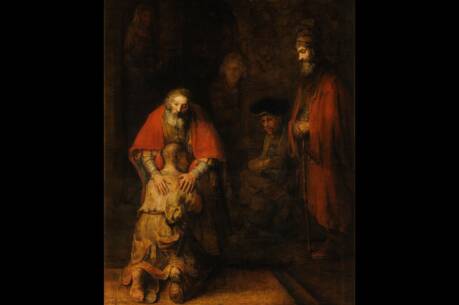Marriages Are Made in Heaven
Marriage is increasingly described as a fragile institution in our society. Divorce rates hover around 40 per cent, with the divorce rate among Catholics at roughly 20 percent. The readings for this Sunday provide a biblical countervision.
The Gospel begins with the Pharisees testing Jesus by asking whether it is lawful for a husband to divorce (lit. send away) his wife. Jesus responds by asking them about the law, and they quote Dt. 24:1, which allows a husband to divorce his wife by simply writing a bill of divorce (see Mt. 1:19). Jesus responds by quoting two sayings from the two creation accounts of Genesis: from the beginning God made them male and female (Gen. 1:27), and the two shall become one flesh (in today’s first reading). Though on paper Jewish first-century divorce legislation seemed to favor easy divorce, in practice divorce was very infrequent.
Jesus’ teaching is not so much an attack on a widespread abuse as it is a prophetic challenge that draws on God’s creative purpose. The Genesis texts attribute two essential qualities to marriage: unity (the two shall become one) and complementarity or mutual interdependence. Neither man alone nor woman alone embodies the fullness of God’s creative design, but man and woman in union mirror the mystery of God. By negating an interpretation of Dt. 24:1-6 that allowed easy divorce, Jesus says in effect that where such a possibility of injustice and inequality exists in marriage, there can be no true marriage according to the intent of Genesis. Jesus views marriage, in which man and woman are no longer two but one, living in unity and interdependence, as a symbol of restored creation. Jesus also utters here a prophetic defense of the innocent victim of divorce, the woman.
All the Gospels both hand on and adapt the teaching of Jesus. Mark is aware of the right of the woman to divorce that was allowed in the Roman empire. While Mark’s Gospel hands on an absolute rejection of divorce, in both Matthew (5:32 and 19:9) and Paul (1 Cor. 7:12-16) there are stated exceptions. The teaching of Jesus left the church with a twofold legacy. On the one hand, the church continues to reiterate Jesus’ prophetic defense of marriage. This is done not simply by opposing cultural trends, but positively through the evolution of excellent marriage preparation programs involving married couples who speak honestly about the challenges to growth in unity and love. On the other hand, the church, especially in its revised annulment procedures, recognizes exceptions to an absolute prohibition. The church must also constantly reflect the pastoral concern of Jesus for those who have suffered divorce. While Jesus presents a vision of what marriage should be, he utters no word of condemnation of the divorced, and the Gospel of John shows Jesus defending a woman about to be stoned for adultery (7:53-8:11), and giving a special mission to an often-married woman, the Samaritan woman at the well.
Mark appends to Jesus’ teaching on marriage another story about Jesus holding a child. Strangely, since they had just heard praise of marriage, the disciples rebuke people for bringing the children. While earlier in Mark Jesus said that whoever receives a child, receives him, here he says that the kingdom of God belongs to such as these and that whoever does not accept the kingdom like a child, will not enter it. After proclaiming an ethic of radical discipleship through unity and mutuality in marriage, Jesus is here not praising childishness, but using the child as a symbol of both non-domination and the need for care that should characterize human relationships. Especially powerful are the final two verses, which describe Jesus, the unmarried prophet, taking the children in his arms and blessing them, an enduring image that should haunt the Christian conscience as we see the horrors of malnourished and disease-ridden children both at home and abroad.
This article also appeared in print, under the headline “Marriages Are Made in Heaven,” in the September 30, 2000, issue.







